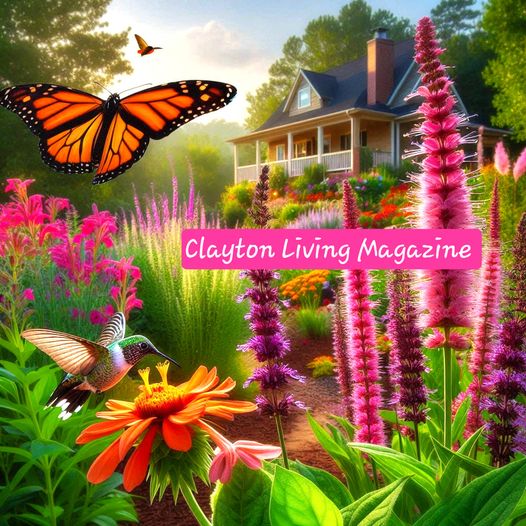The Blooming Benefits: Best Pollinating Flowers for Clayton, NC Garden
 North Carolina, gardens are not just a feast for the eyes but can also be a haven for pollinators. These tiny workers are vital to our ecosystem, playing a crucial role in the reproduction of many plants and the production of a significant portion of our food. Creating a pollinator-friendly garden is a delightful way to contribute to environmental conservation while enjoying the beauty and bounty of nature.
North Carolina, gardens are not just a feast for the eyes but can also be a haven for pollinators. These tiny workers are vital to our ecosystem, playing a crucial role in the reproduction of many plants and the production of a significant portion of our food. Creating a pollinator-friendly garden is a delightful way to contribute to environmental conservation while enjoying the beauty and bounty of nature.
📌 Why Pollinator-Friendly Gardens Matter
Pollinators like bees, butterflies, and hummingbirds are essential for the survival of over 85% of the world's flowering plants, including many of our fruits and vegetables¹. However, these crucial creatures are facing challenges due to habitat loss, diseases, and pollution. By planting a garden that supports pollinators, you're not only enhancing your local environment but also contributing to global biodiversity.
📌 Selecting the Right Flowers
When choosing flowers for your garden, it's important to select a variety that will bloom throughout the growing season, providing a consistent source of nectar and pollen for visiting pollinators. Here are some of the best pollinator-friendly flowers to plant in Clayton:
- Asters: With their star-shaped flowers, asters are a late-blooming plant that can provide nectar when other sources are scarce.
- Black-eyed Susan: These bright, sun-loving flowers are a favorite among bees and butterflies.
- Blazing Star: Known for its tall spikes of purple flowers, the blazing star is particularly attractive to butterflies.
- Coneflower: The coneflower, or Echinacea, is not only beautiful but also a magnet for bees and butterflies.
- Daisy: Simple yet elegant, daisies are beloved by a variety of pollinators.
- Goldenrod: Often unjustly blamed for hay fever, goldenrods are actually important plants for bees, especially as a late-season food source.
- Milkweed: Essential for monarch butterflies, milkweed is the only plant on which they lay their eggs.
- Piedmont Azalea: A native shrub with lovely spring blooms that attract hummingbirds and butterflies.
- Sunflower: These iconic flowers are not just pretty; they're also a great food source for bees.
- Swamp Rose: Ideal for wetter areas of your garden, swamp roses are attractive to a host of pollinators¹.
📌 Tips for a Thriving Pollinator Garden
- Plant in Clusters: Grouping the same types of plants together can make it easier for pollinators to locate and feed on the flowers.
- Avoid Pesticides: Chemicals can be harmful to pollinators, so opt for natural pest control methods.
- Provide Water: A shallow water source can be a welcome addition for thirsty pollinators.
- Include Night-Bloomers: Flowers like evening primrose will attract nocturnal pollinators such as moths and bats.
By incorporating these plants into your garden, you'll not only create a beautiful landscape but also a functional one that supports the local ecosystem. Your efforts will ensure that Clayton continues to buzz with the life-giving work of pollinators. Happy gardening!
For more detailed guidance and a comprehensive list of pollinator plants, you can review NC State Extension’s Pollinator Conservation Guide¹. Remember, every flower planted is a step towards a healthier planet. Let's make Clayton bloom with purpose!
Source: Conversation with Copilot, 5/31/2024
(1) Growing a Pollinator Garden | Homegrown | NC State University. https://homegrown.extension.ncsu.edu/.../growing-a.../
(3) Top 25 Native Pollinator Plants for North Carolina. https://growingsmallfarms.ces.ncsu.edu/.../2021-Top-25...
(4) Pollinator Conservation Guide | NC State Extension. https://growingsmallfarms.ces.ncsu.edu/growingsmallfarms.../
(5) https://auth1.dpr.ncparks.gov/flora/index.php
(6) https://www.newhopeaudubon.org
- Created on .
- Hits: 282